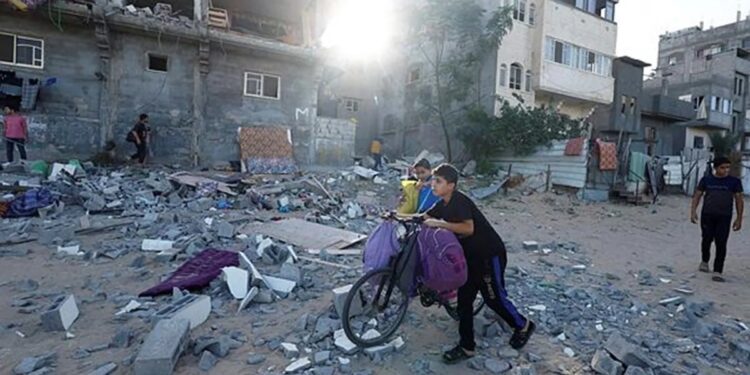In the ongoing conflict between Israel and Hamas, the Israeli military is intensifying efforts to locate and apprehend Yehiya Sinwar, the alleged mastermind behind the October 7 attacks. Sinwar, who commands Hamas, is believed to be hiding in a complex network of tunnels beneath southern Gaza, according to reports from the Israeli military.
However, the task is complicated by the presence of a human shield surrounding Sinwar, consisting of captives held by Hamas. This shield serves to obstruct Israel’s attempts to dismantle the terrorist group and bring an end to the conflict, which has lasted over four months. The shield aims to prevent any operation aimed at capturing or eliminating Sinwar.
Interviews with Israeli officials, both current and former, shed light on the significance of capturing or neutralizing Sinwar. Prime Minister Benjamin Netanyahu recently emphasized the importance of eliminating the Hamas leadership, stating, “We will kill the Hamas leadership.” This underscores the central role Sinwar plays in the conflict and the Israeli government’s determination to remove him from power.
The Israeli operation in Gaza is contingent upon the outcome of efforts to deal with Sinwar. Until he is either killed, captured, or removed from his leadership position within Hamas, the conflict is unlikely to come to a conclusion. Netanyahu’s declaration highlights the dependency of the conflict’s resolution on the success of the mission to apprehend or eliminate Sinwar.
The maze-like system of tunnels in Gaza poses a significant challenge for the Israeli military, as it provides ample hiding places for Sinwar and other Hamas leaders. Despite the difficulty, Israeli forces are committed to pursuing Sinwar relentlessly until he is brought to justice.
The ongoing conflict between Israel and Hamas has resulted in significant casualties and destruction on both sides. The resolution of the conflict hinges on the ability to address the root causes, including the leadership of Hamas. Until leaders like Sinwar are dealt with, the cycle of violence and tension is likely to persist in the region.

















Comments